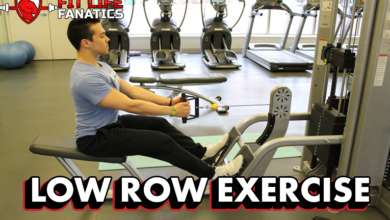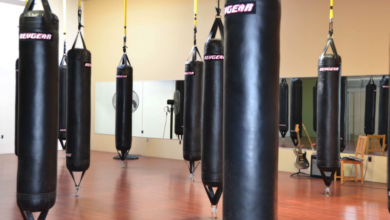1 Set to Failure Everyday

Ask around, any gym rat will tell you training to failure is brutal and unforgiving. Yet folks around the world still push themselves to the breaking point, and then some.
What gives?
The answer is quite simple really. We’re all in pursuit of gains. That’s right, training to failure does offer a plethora of cool perks that make this mode of training worth the blood, sweat, and tears.
But before you hit the deck and grind it out to oblivion, there’s something you need to know. The gains you can achieve with training to failure come at a cost. That’s why I set out to try and understand (and you should, too) whether training to failure every day is good for me, and whether it’s a good idea in the first place.
Turns out, there is no right or wrong answer to this. I can bet you have as many questions as I had when going into this; should you train to failure every single day? Just how much should you train to failure? Is training to failure good for hypertrophy? How can I establish 1 set to failure routine?
Lucky for you, I set out to learn about training to failure and jotted my findings down. In this post, I am going to break everything down for you so you won’t have to scour the internet and do the digging.
If you ended up here on your quest to understand how to train one set to failure, and whether you should do it every day, then stick around.
Let’s get started!
How close to failure should you train?
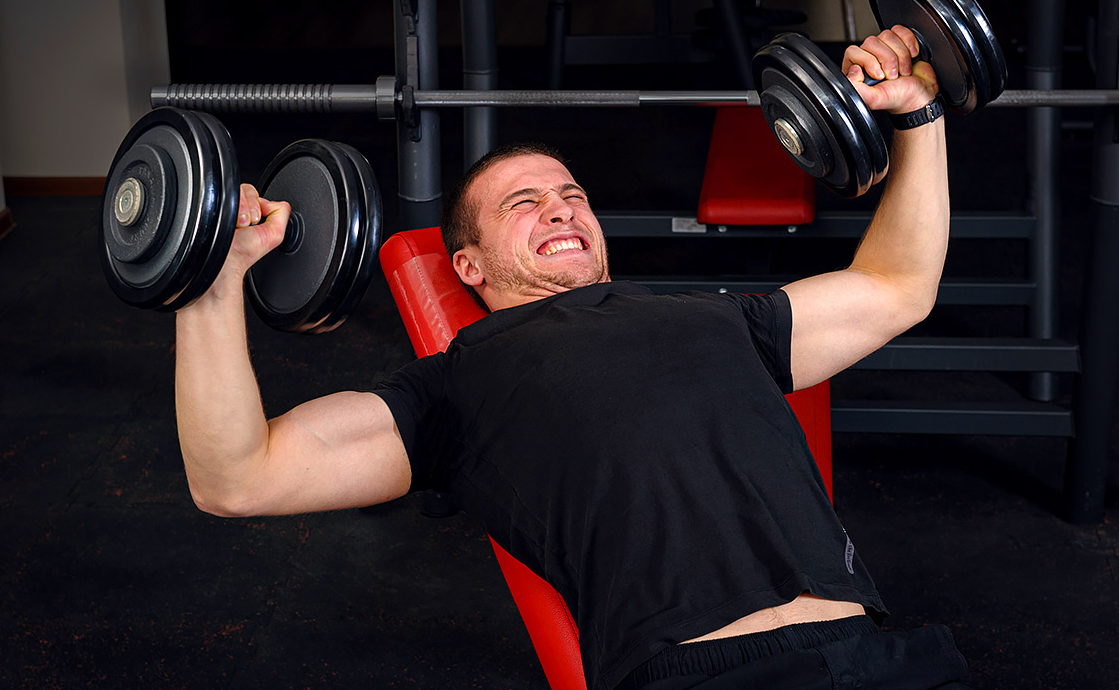
You may or may not train to failure. I know that sounds complicated and may be it is, so let’s scratch the surface.
Thing is, training to failure takes substantial motivation to pull off. And the truth is, it’s very taxing on the muscles and the body in its entirety. Let’s face it, even low row, smith machine squat, smith machine deadlift and bodyweight workouts like sumo squat or goblet squat are tough enough leave alone going as far as hitting failure.
This also means the need for longer recovery time, often 24 to 48 hours longer than you’d normally need if you stopped just short of gassing out your muscles with each set.
That is to say, how close you should train to failure, or whether you should go all out on that set is all down to your capabilities and training goals. For beginner lifters, I’d advise against pushing your muscles to such extremes, as that could do you more harm than good.
Both intermediate and advanced lifters, on the other hand, can choose whether to stop just shy of failure, or train to failure. The choice here boils down to your workout schedule, whether you are fit enough for the challenge, and the gains you are shooting for.
How Much Should You Train to Failure?

Let’s jump right into the next question that is (apparently) bothering most gym goers out there. Should you decide to go for broke and gas yourself out with training to failure, how much should you keep at it? How frequently should you train to failure?
As I mentioned above, you sure can train to failure. But then, that calls for more recovery time. That is to say, for you to make the most out of this form of training, and not end up with overuse injuries, you will need enough time for your muscles to pull themselves back together and load up for the next grind.
You do realize that by this I mean a longer time than you usually do for your normal workout routine. If you are used to doing full body workout every other day, then you know what I’m talking about. For those who like to workout 6 days a week, you’ll have to make a switch here.
On average, keeping your frequency at only a few days each week should work just fine. Even one day of training failure should give you the results you’re looking for. After all, the point is to push your muscles to form tiny tears, then leave them to recover (repair) those tears, which is at the heart of those muscle growth stories you have read around.
Is Training to Failure Necessary for Muscle Growth?

Right from the get-go, you can bet this is going to be your worst nightmare, yet gym freaks out here are going for it regardless. Is it really worth it?
Well, it is.
But as much as I hate to be the party pooper, I have some bad (or rather good) news for you. It’s certain that exercising to failure is going to shock the muscles, fire them up and skyrocket them to hypertrophy. But this isn’t some magic bullet that drives results that not exercising to failure can’t.
Besides, if you’re not well-versed in what you’re doing, you could end up doing yourself harm. In the sense that, as you inch close to failure, you could lose proper form, and/or worse yet, even risk injury. This is more so when training with weights for those who like to squat and bench on the same day or the likes of Arnold press and military press. Then factor in the longer resting periods, which you would otherwise put to good use, and train even further…
The bottom line here is that training to failure does help, and big time so, but mostly if you’re doing it to break out of a plateau. Otherwise, you can do it for the fun of it, and have the gains come as a by-product. You might love it more, and achieve more that way. But no, training to failure is not necessarily a requirement for hypertrophy.
How do You do Sets to Failure?

Since you have scrolled this far down, it’s clear that, in all probability, you are not fazed by the challenge ahead. Let’s get into the meatier bits then and break things down for you so you can put your best foot forward should you decide to put your muscles through their phases in a test of brawn and might.
To train to failure, you start by picking an amount of weight that is adequately heavy to put enough load on your muscles for the reps preceding that final rep. The idea is to do several reps as you culminate toward failure.
For instance, if you often do 3 sets of ten reps of cambered bar curls, that is 3 X 10. The weight you should be loading up on that bar depends on your ability (or fitness level). And of course, remember to factor in how much the bar weighs. In case you’re not sure of this, worry not. I have previously shared about Ez bar weight, smith machine bar weight, deadlift bar weight, trap bar weight and others on this site.
The idea though is to select a weight that will drain your muscles’ supply of ATP (the energy fuelling your muscular function), and have lactic acid build-up kick in. With the right weight selection, by the time you hit the tenth rep (also known as the 10RM- Repetition Maximum, your muscles will be approaching this critical level.
Once your muscle’s ATP levels are drained, and lactic acid buildup has occurred, the muscle tissue will need a few minutes to flush the acid out before refuelling on ATP. That’s where failure kicks in – however hard you try to complete the rep, the extreme burnout won’t let you hit the max.
That’s one set to failure right there. You can decide to take a break and resume, but if you’re going for just one set to failure, that’s it.
Scientific Research about Training to Failure
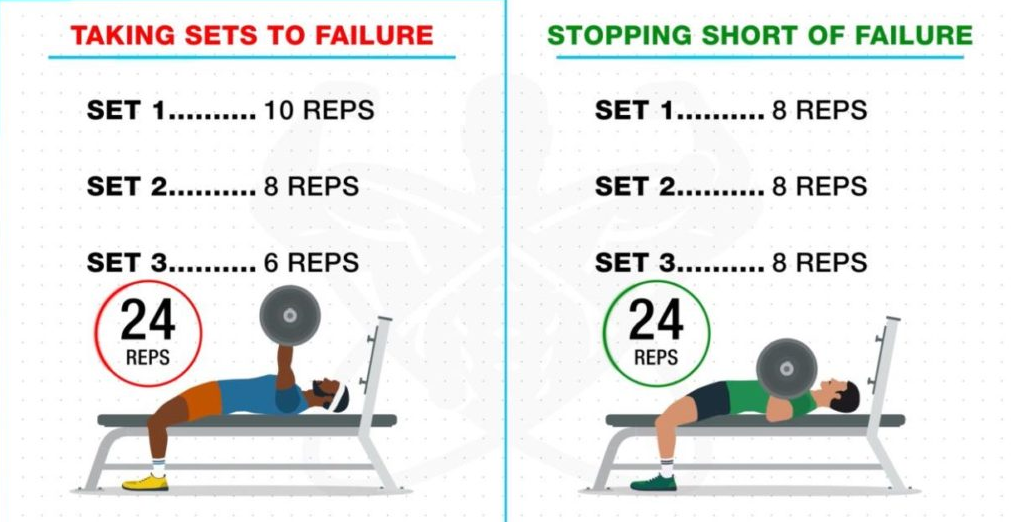
As I mentioned above, training to failure isn’t essentially a prerequisite for hypertrophy but it sure helps rock the boat just enough to trigger muscle growth. According to a study review, training to failure does have an advantage on musculature with a maximal number of bench press reps, especially in improving muscle endurance and growth. (1)
The point here is, the athlete should train to hit close to failure or complete failure to max out their muscular strength and hence provide a stimulus for the desired results – endurance and growth.
Another publication also concluded that for untrained people, high resistance training executed to failure doesn’t automatically translate to an increase in both strength and mass gains. However, there can be considerable gains in both size and strength with low-intensity resistance training performed to similar reps as with high-intensity ones. (2)
For the trained subjects, high-intensity training to failure showed significantly higher increases in strength and growth than was seen with repetitions not taken to failure. That said, researchers observed that, like with untrained individuals, training to failure with low intensity offers a great opportunity to maximize gains but does little to enhance muscular strength if done by strength-trained lifters.
1 Set Per Exercise Full Body Workout
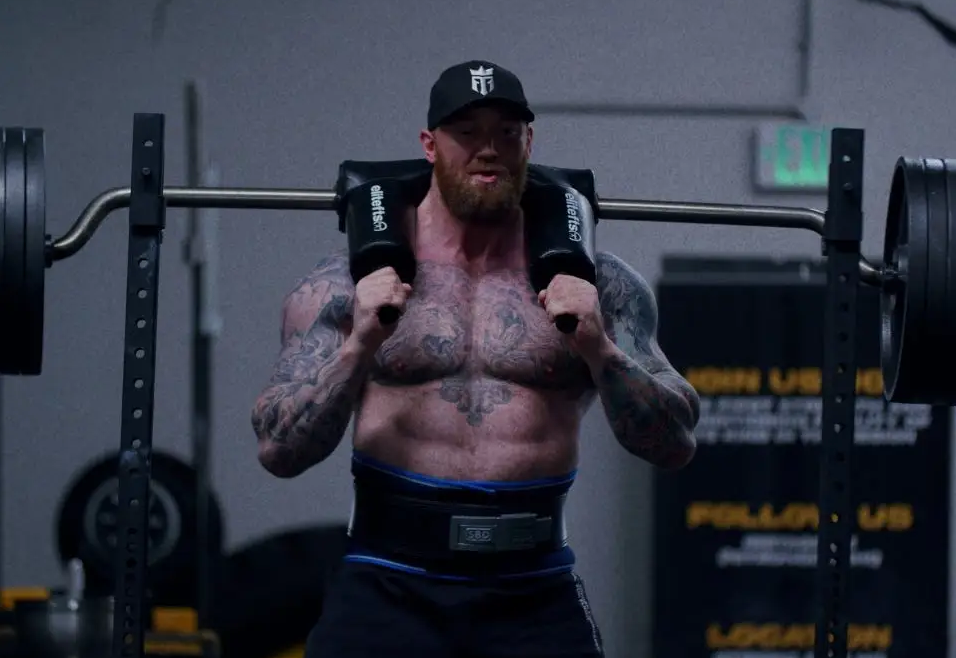
Moat people wonder whether doing one set full body workout every day is plausible. Lucky for y’all, it is. You should be on the safe side of things doing single sets to failure, provided you are doing different exercises for a combined full-body workout. Like say you crank away on chest press or bench press, or do chest and leg workout, and then focus on your biceps and triceps or another muscle group(s).
Now, should you do this every day? That depends. Remember what we mentioned above about the need for more recovery time after intensive training?
That should be part of the game. If you are training to failure, space the sessions out and have enough rest days. For instance, you do 1 set to failure 3 times a week and rest for the rest of the days. If you’re only sticking to low to medium intensity and not gassing yourself out, just listen to your body. But be careful not to get carried away and workout 7 days a week lest you end up battered, bruised and sore AF.
One Set to Failure Routine
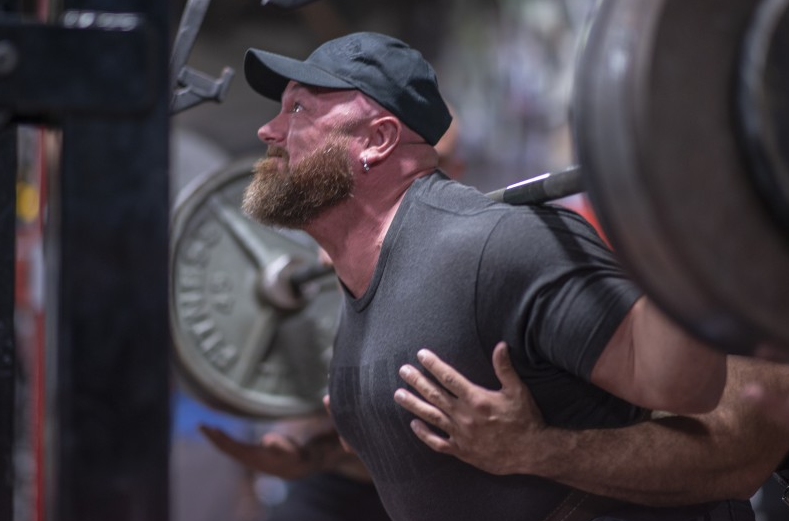
Setting up a routine for training to failure with only a single set workout plan will take a bit of planning and getting used to. You will need to figure out what works and what doesn’t. Whatever you do though, don’t make the mistake of training to failure every single day.
Or, you can go with training to technical failure instead to sort of get the best of both worlds. With technical failure, you don’t train till you cannot do that last rep. Instead, you push yourself only as far as where you cannot do the reps in the right form.
Once you get to this point, you call off the set and rest for a while before embarking on the next set. You can also leave it at that and resume your workout the following day. Your call!
You will still have some gas left, so balancing this with consistency can become easier and more practical.
1 Set to Failure Reddit

In my quest to understand training to failure I looked into every nook and cranny and ended up on Reddit. Turns out, the debate over there is as heated as it is anywhere else on the internet. But I did pick one useful tidbit on one thread. The point is, doing one set to failure is highly time efficient for those who do not have enough time to hit the gym daily. Once you do, you can train to failure to recruit threshold motor units and make up for the days you won’t be in the gym, then let your muscles recover.
1 Set of Push-Ups to Failure Everyday

Contrary to common belief, you don’t need to bench press or do deadlifts alone when training to failure. Bodyweight workouts can prove to be just as effective if used discreetly. YouTube is the other alley I checked out in my search for all things training to failure. And this guy did pique my attention with how in-depth he goes with breaking down how to do one set of push-ups to failure every day and how much of a change it can make in your life – both physically and psychologically.
The Take-Away

To wrap it up, here is a breakdown of what I learned and what I have experienced in my several months of hitting 1 set to failure. If done right, there is a treasure-trove of benefits in this training. Get it wrong, and you risk an injury that could put you out of commission for a long time.
All said and done, training to complete that one set will give you a great deal of discipline both in and out of the gym. If you’re new to fitness training, be cautious about this. Have a more experienced buddy teach you the tricks. And even for the seasoned gym rats out there, remember that moderation is crucial and could mean the difference between success and injury.
Related Reading;
- Best Cheap Squat Racks, Stands, & Power Racks for Those on A Tight Budget
- The Best Full-Body Workout Machines For Home Use – Top Total-Body-Toning Equipment
- What Muscles do Face Pulls Work?
- Best Reverse Hyperextension Machines – Reviewed & Rated
- Rear Delt Fly: How To (Video), Muscles Worked, Benefits, & Alternatives Exercises
- What Should I Workout After Chest Day? The All-You-Need-To-Know Guide
Resources;
- https://builtwithscience.com/fitness-tips/training-to-failure/
- https://www.insider.com/working-out-to-failure-pros-cons-how-to-do-2021-7
- https://www.verywellfit.com/definition-of-training-to-failure-3498621#citation-2
- https://www.reddit.com/r/bodybuilding/comments/1umjyz/has_anyone_tried_a_singleset_regimen_for_any/
Ben Mayz
Hi there! I'm Ben, main author and chief editor at Fitlifefanatics.com. I have been obsessed with Strength Training and Fitness for 18 years now.
My passion for living a happy fit lifestyle is what made me realize that fitness is what I wanted for my future.
I went on to earn my Masters in Sports Training & Biomechanics.
My passion for Strength training & fitness and my love of helping others is what made me start Fitlifefanatics.
Here, myself, and a team of specialist aim to provide the most accurate, and actionable information possible in hopes to help foster the fitness community forward.
You can learn more about Fitlifefanatics on our About Page

